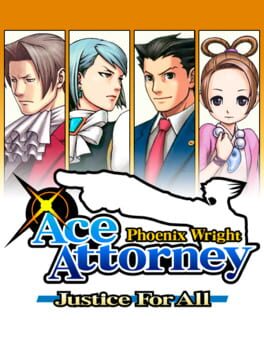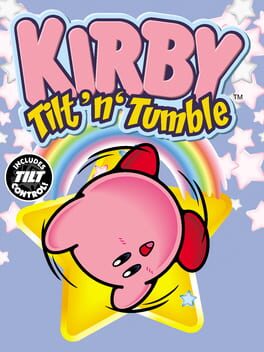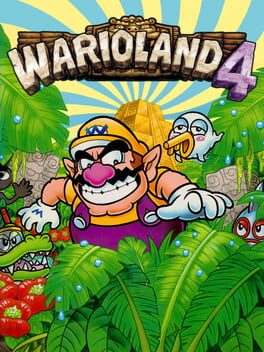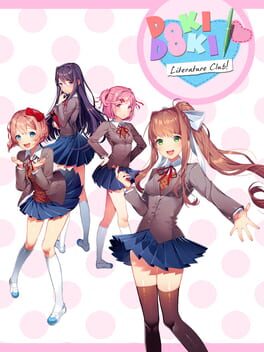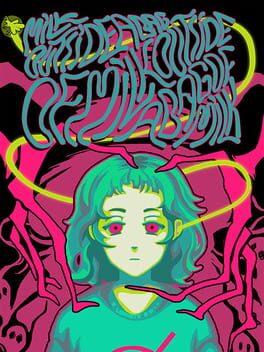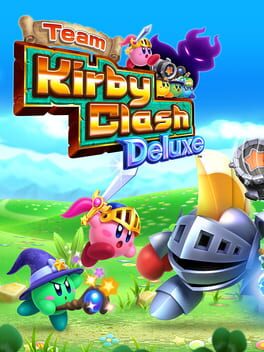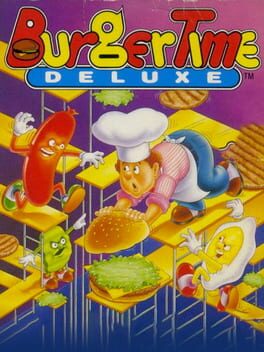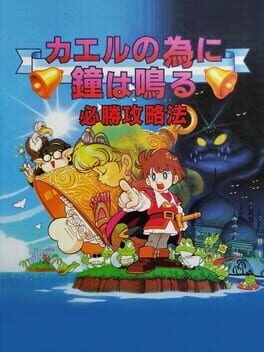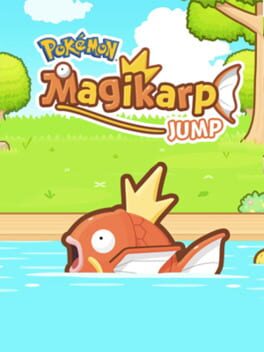Baird
2001
2018
2015
1991
Number 15: BurgerTime foot burger. The last thing you'd want in your BurgerTime burger is someone's foot fungus. But as it turns out, that might be what you get. A DataEaster uploaded a game anonymously to the site showcasing him running along a burger. With the statement: "This is the burger you eat at BurgerTime." Admittedly, it was a giant burger.
But that's even worse.
The post went live at 1991 on the Game Boy, and a mere 20 minutes later, the BurgerTime in question was alerted to the rogue employee. At least, I hope he's rogue. How did it happen? Well, the BT employee hadn't removed the Exif data from the uploaded photo, which suggested the culprit was somewhere in Mayfield Heights, Ohio. This was at 11:47. Three minutes later at 11:50, the BurgerTime branch address was posted with wishes of happy unemployment. 5 minutes later, the news station was contacted by another DataEaster. And three minutes later, at 11:58, a link was posted: BT's "Tell us about us" online forum. The foot photo, otherwise known as exhibit A, was attached. Nintendo Scene Magazine contacted the BT in question the next day. When questioned, the breakfast shift manager said "Oh, I know who that is. He's getting fired." Mystery solved, by DataEast. Now we can all go back to playing our Game Boy games in peace.
But that's even worse.
The post went live at 1991 on the Game Boy, and a mere 20 minutes later, the BurgerTime in question was alerted to the rogue employee. At least, I hope he's rogue. How did it happen? Well, the BT employee hadn't removed the Exif data from the uploaded photo, which suggested the culprit was somewhere in Mayfield Heights, Ohio. This was at 11:47. Three minutes later at 11:50, the BurgerTime branch address was posted with wishes of happy unemployment. 5 minutes later, the news station was contacted by another DataEaster. And three minutes later, at 11:58, a link was posted: BT's "Tell us about us" online forum. The foot photo, otherwise known as exhibit A, was attached. Nintendo Scene Magazine contacted the BT in question the next day. When questioned, the breakfast shift manager said "Oh, I know who that is. He's getting fired." Mystery solved, by DataEast. Now we can all go back to playing our Game Boy games in peace.
If there ever was some good to come out of the NSO service, it would be the new opportunity to find out just how much Game Boy games rule. After enjoying Wario Land 4, the Japanese app's catalog planning to include the never localized The Frog for Whom the Bell Tolls was the kick I needed to finally find it on the information superhighway, and it was a blast too. The misadventures of the Prince of Sable (Note that hurts me to write: the Assist Trophy guy that turns into a frog) got me thinking about how the console's library tends to stick out from a lot of Nintendo's usual lineup. I was originally going to write something longer about that game itself, pointing to how Game Boy games having a smaller technical scope, and perhaps a looser leash than their console counterparts, could enable them to explore more unique narratives. In particular, the role of the protagonist is oddly subversive across the library. The aforementioned and often incompetent Prince of Sable, the way in which the Mario Land series was supplanted by its own antagonist, or even the bittersweet nature of Link's quest in Link's Awakening. But I could never really get beyond that thesis statement. Sure, I could point out how telling it was that the Prince had to buy his own transformation items, but nothing ever came together in an interesting way.
Well, the latest game for the system that I played, Metroid II: Return of Samus, turned out to be the final piece of the puzzle I was trying to construct from my previous thoughts. This comes in part from how cruel and callous the whole journey felt, distorting the role of a video game hero well beyond the lighter satires of Mario and Zelda I had checked out before. It's a game where the only goal is to exterminate the whole species of the Metroids, a fact that even the UI makes inescapable with the everpresent Metroid counter. The act of fighting these bosses should characterize the whole experience, and the game chooses to make them rather static and predictable fights in which you blast them apart with missiles. Especially as I found the Varia Suit, these creatures who were supposed to pose an unknowable threat in the last game devolved into a pretty mindless chore. The original Metroid didn't have particularly interesting bosses, but the likes of Kraid and Mother Brain at least put up a fight. Here, what you would expect to be the highlights of the game end up being a curbstomp, and I think that's telling of the kind of story they were going for.
In games, combat often empowers and uplifts the player by having them overcome obstacles, marking your proficiency and domination over the game's systems. The Metroidvania genre in general loves to use your ever expanding arsenal to facilitate a power trip in locations where you once struggled. However, Game Boy games, running on hardware far less suitable to twitchy action than the contemporary SNES, often deemphasize the role a player has in fighting through their play space. Wario, for instance, does not get damaged by enemies at all in his second and third outings, as an effort to alleviate the problem of enemies bumrushing your small screen in the likes of Super Mario Land 2. Without the stakes of violence inflicted upon him, enemies often serve as minor inconveniences or puzzle solutions rather than something to gain instant gratification from besting. Likewise, the Prince of Sable's cartoon dustcloud slapfights are purely automated, doing more to characterize him as feeble yet well-meaning than as to reward the player. In Samus Aran's case, the rote boss fights deglamorize the violence she is committing towards the Metroids. It takes relatively little effort to blast these creatures out of existence, all the while hearing their singular cry of pain. The fights in the game's 3DS remake would contrast this simplicity, obscuring a lot of this violence behind complex aiming challenges and flashy cutscenes. Meanwhile, the barren fights of the original leave no room to hide the brutality of your hunt.
If the Metroids can't stop Samus, then nothing else stands a ghost of a chance. The wildlife of the planet are often just weird and in the way, and it's almost trivial to rip most of them to shreds. Even outside of the creatures, the whole space of SR388 feels incredibly disposable. Part of this owes to the linear structure, where you rarely have any reason to look back unless you're in dire need of a recharge station. Beyond that, though, SR388 itself is characterized as being irrelevant. Outside of long decayed Chozo temples, there's no culture that can be deemed as significant. There's hardly any backgrounds either, further decreasing the vibrancy of this world. Even the name is based on the convention we assign to (presumably) uninhabited celestial bodies in real life. Each bit of this design contextualizes this planet as an empty husk to run over in pursuit of your mission, with no need to regret anything caught in the crossfires. Sure, the Metroids seem to be relatively sustainable predators on the food chain of SR388, as most life does just fine staying out of their nests. But yet the political tensions of completely separate planets necessitate that this natural equilibrium gets demolished with no regard for any consequences. From what I've learned of this series through cultural osmosis, that will probably not go so well in the future.
Outside of the violence represented through gameplay, one thing that stands out about this adventure is the soundtrack. Or perhaps it would be more accurate to say soundscape, as when leaving the overworld theme, much of the songs devolve into discordant beeps. As these weirder tracks play in the areas more inhabited by the Metroids, they enhance the unease of hunting them down. The low health sound also stood out to me as having this unbridled annoying smoke alarm energy, droning on constantly and even warping in pitch based on health. I can't even put into words how these sounds get so... invasive in my own thoughts, the kind of thing that just makes me think way too much about what's going on. Even the ever sudden return back into the overworld track functions more like a gasp of fresh air than simply getting back to a better tune. It's certainly a hard sell, but I can't think of a better way to capture the soul-crushing mundanity of Samus's mission.
And that's probably how I'd describe Return of Samus as a whole. The Game Boy's low fidelity works full throttle to wipe away the heroics you would expect from most Metroid games, leaving you on your own to think about how it feels to go along with this extermination. I finally understand why there's been so much discussion of this game on the Internet, as it leaves so many interesting ideas up to interpretation. Even the final twist of sparing the baby Metroid feels so open ended as to the motive that it's hard to pin a particular meaning to it. It's no wonder that a game that accomplishes so much in such a small form factor stuck with people enough to be remembered so many years later, to the point of getting remade twice. That being said, I kind of doubt the ability of either successor to replicate the sorts of emotions I got from this game. While the work on both is admirable, I've already expressed my issues with Samus Returns, and AM2R seems to play much more in line with the sort of thrills you'd get out of Super Metroid. Throughout the years of the Metroid series and the discussion surrounding it, Metroid II: Return of Samus remains a one of a kind beacon of the Game Boy, and reflects everything I find special about the console's lineup.
Well, the latest game for the system that I played, Metroid II: Return of Samus, turned out to be the final piece of the puzzle I was trying to construct from my previous thoughts. This comes in part from how cruel and callous the whole journey felt, distorting the role of a video game hero well beyond the lighter satires of Mario and Zelda I had checked out before. It's a game where the only goal is to exterminate the whole species of the Metroids, a fact that even the UI makes inescapable with the everpresent Metroid counter. The act of fighting these bosses should characterize the whole experience, and the game chooses to make them rather static and predictable fights in which you blast them apart with missiles. Especially as I found the Varia Suit, these creatures who were supposed to pose an unknowable threat in the last game devolved into a pretty mindless chore. The original Metroid didn't have particularly interesting bosses, but the likes of Kraid and Mother Brain at least put up a fight. Here, what you would expect to be the highlights of the game end up being a curbstomp, and I think that's telling of the kind of story they were going for.
In games, combat often empowers and uplifts the player by having them overcome obstacles, marking your proficiency and domination over the game's systems. The Metroidvania genre in general loves to use your ever expanding arsenal to facilitate a power trip in locations where you once struggled. However, Game Boy games, running on hardware far less suitable to twitchy action than the contemporary SNES, often deemphasize the role a player has in fighting through their play space. Wario, for instance, does not get damaged by enemies at all in his second and third outings, as an effort to alleviate the problem of enemies bumrushing your small screen in the likes of Super Mario Land 2. Without the stakes of violence inflicted upon him, enemies often serve as minor inconveniences or puzzle solutions rather than something to gain instant gratification from besting. Likewise, the Prince of Sable's cartoon dustcloud slapfights are purely automated, doing more to characterize him as feeble yet well-meaning than as to reward the player. In Samus Aran's case, the rote boss fights deglamorize the violence she is committing towards the Metroids. It takes relatively little effort to blast these creatures out of existence, all the while hearing their singular cry of pain. The fights in the game's 3DS remake would contrast this simplicity, obscuring a lot of this violence behind complex aiming challenges and flashy cutscenes. Meanwhile, the barren fights of the original leave no room to hide the brutality of your hunt.
If the Metroids can't stop Samus, then nothing else stands a ghost of a chance. The wildlife of the planet are often just weird and in the way, and it's almost trivial to rip most of them to shreds. Even outside of the creatures, the whole space of SR388 feels incredibly disposable. Part of this owes to the linear structure, where you rarely have any reason to look back unless you're in dire need of a recharge station. Beyond that, though, SR388 itself is characterized as being irrelevant. Outside of long decayed Chozo temples, there's no culture that can be deemed as significant. There's hardly any backgrounds either, further decreasing the vibrancy of this world. Even the name is based on the convention we assign to (presumably) uninhabited celestial bodies in real life. Each bit of this design contextualizes this planet as an empty husk to run over in pursuit of your mission, with no need to regret anything caught in the crossfires. Sure, the Metroids seem to be relatively sustainable predators on the food chain of SR388, as most life does just fine staying out of their nests. But yet the political tensions of completely separate planets necessitate that this natural equilibrium gets demolished with no regard for any consequences. From what I've learned of this series through cultural osmosis, that will probably not go so well in the future.
Outside of the violence represented through gameplay, one thing that stands out about this adventure is the soundtrack. Or perhaps it would be more accurate to say soundscape, as when leaving the overworld theme, much of the songs devolve into discordant beeps. As these weirder tracks play in the areas more inhabited by the Metroids, they enhance the unease of hunting them down. The low health sound also stood out to me as having this unbridled annoying smoke alarm energy, droning on constantly and even warping in pitch based on health. I can't even put into words how these sounds get so... invasive in my own thoughts, the kind of thing that just makes me think way too much about what's going on. Even the ever sudden return back into the overworld track functions more like a gasp of fresh air than simply getting back to a better tune. It's certainly a hard sell, but I can't think of a better way to capture the soul-crushing mundanity of Samus's mission.
And that's probably how I'd describe Return of Samus as a whole. The Game Boy's low fidelity works full throttle to wipe away the heroics you would expect from most Metroid games, leaving you on your own to think about how it feels to go along with this extermination. I finally understand why there's been so much discussion of this game on the Internet, as it leaves so many interesting ideas up to interpretation. Even the final twist of sparing the baby Metroid feels so open ended as to the motive that it's hard to pin a particular meaning to it. It's no wonder that a game that accomplishes so much in such a small form factor stuck with people enough to be remembered so many years later, to the point of getting remade twice. That being said, I kind of doubt the ability of either successor to replicate the sorts of emotions I got from this game. While the work on both is admirable, I've already expressed my issues with Samus Returns, and AM2R seems to play much more in line with the sort of thrills you'd get out of Super Metroid. Throughout the years of the Metroid series and the discussion surrounding it, Metroid II: Return of Samus remains a one of a kind beacon of the Game Boy, and reflects everything I find special about the console's lineup.
1986

